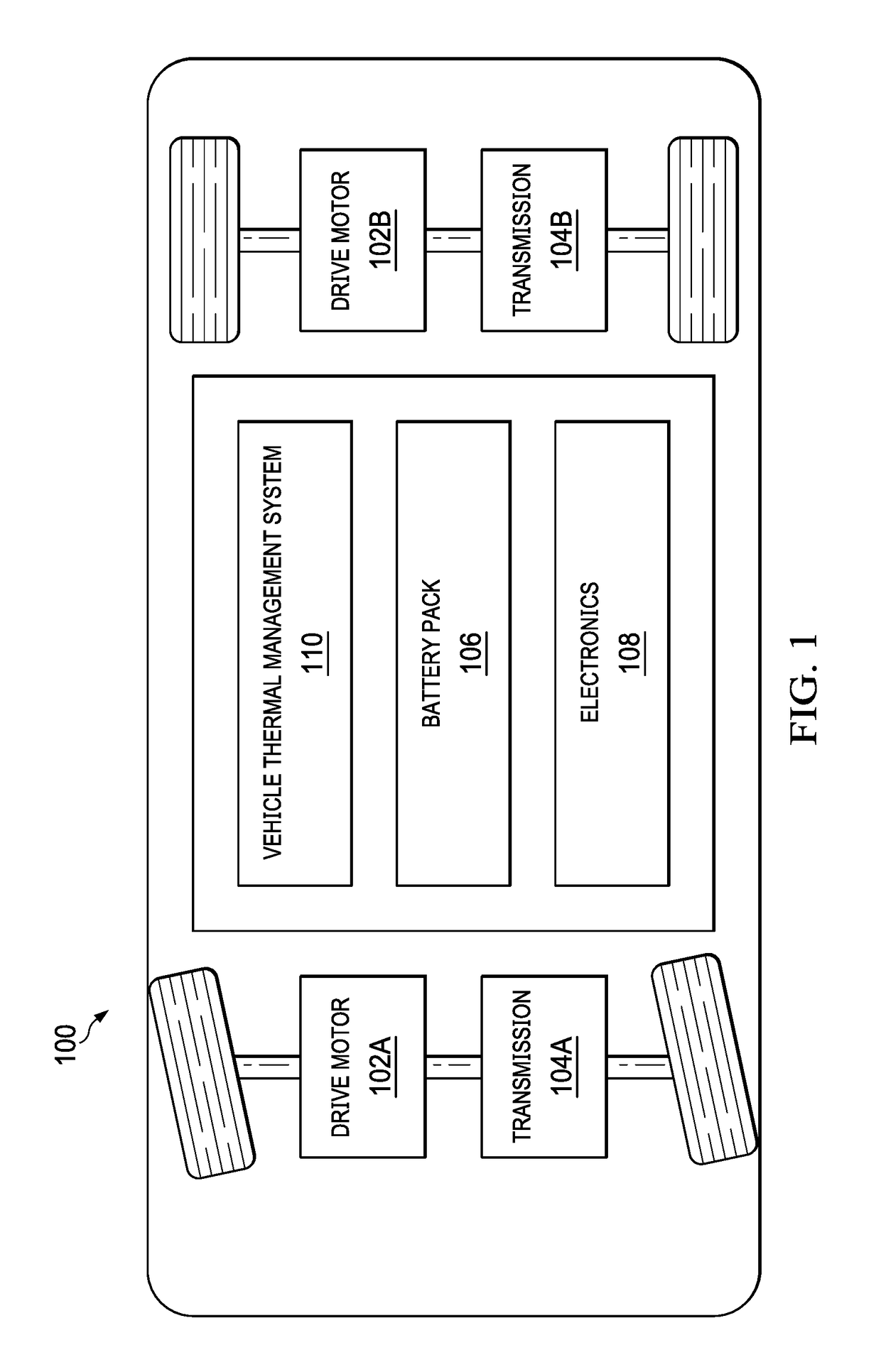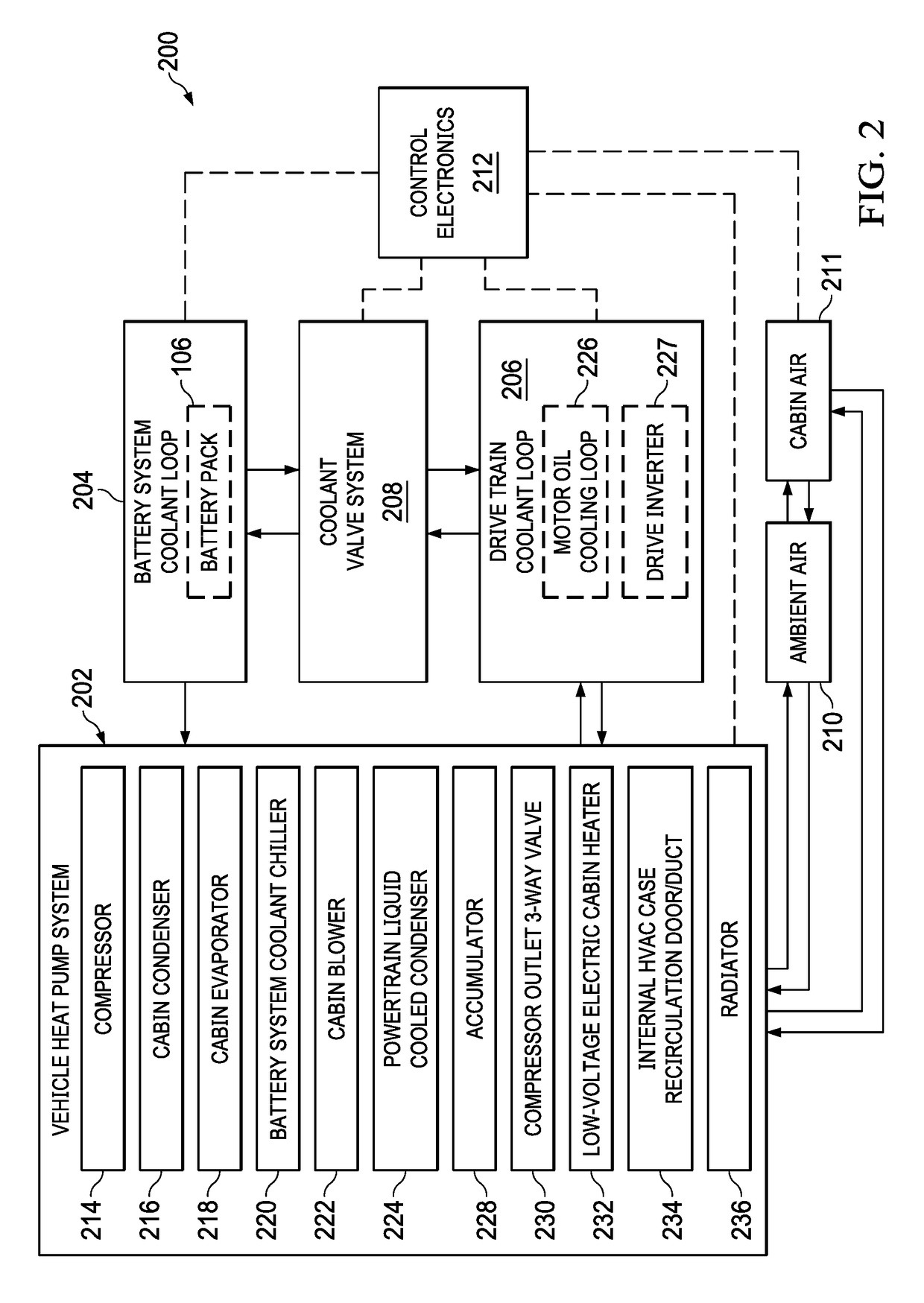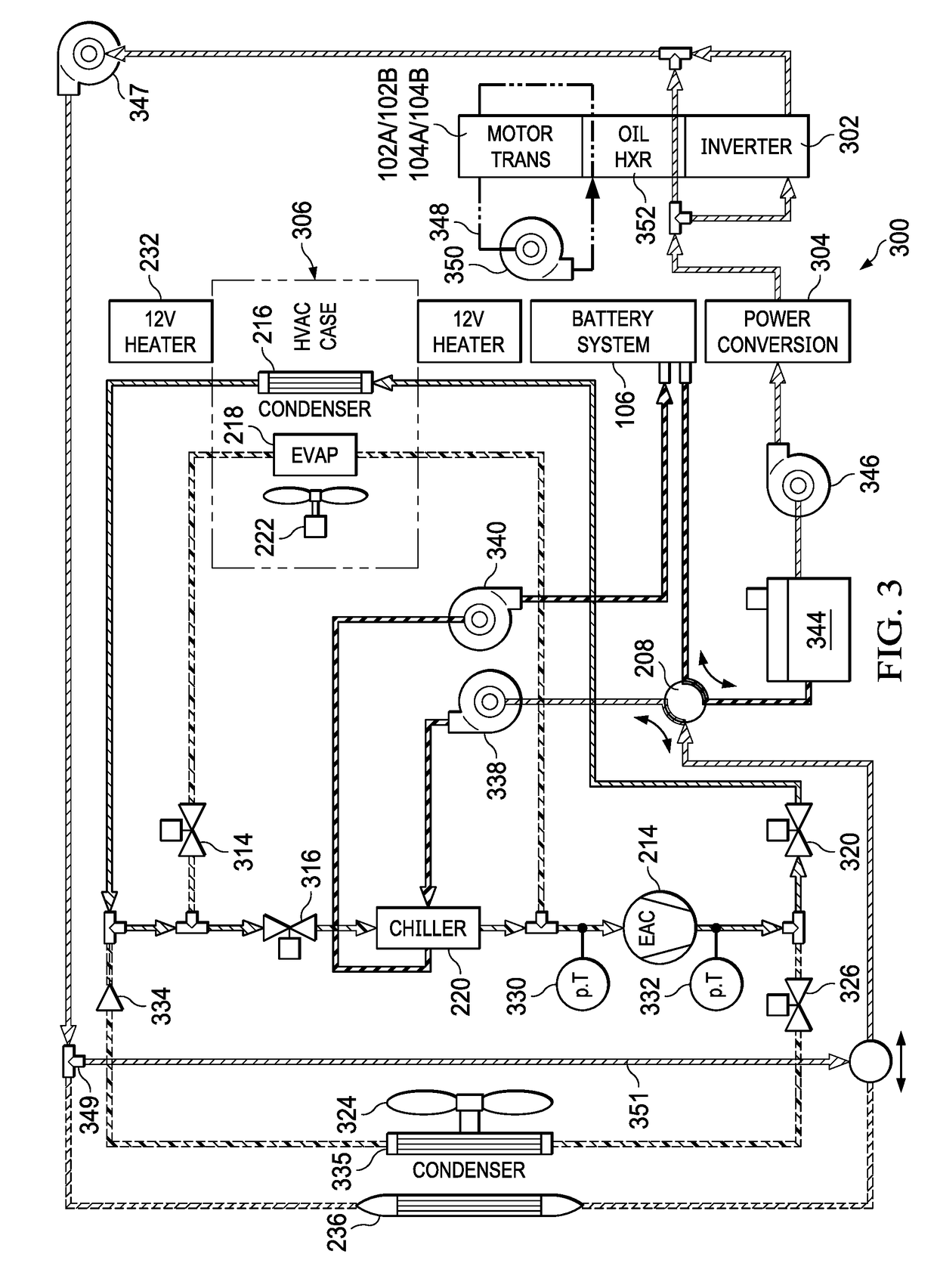Optimal source electric vehicle heat pump with extreme temperature heating capability and efficient thermal preconditioning
a heat pump and extreme temperature technology, applied in vehicle heating/cooling devices, battery/fuel cell control arrangements, transportation and packaging, etc., can solve the problems of limited capabilities of thermal management systems used in many electric and hybrid vehicles, inherently inefficient approaches, and still relatively complex, etc., to achieve more efficient heating of the cabin, enhance operations, and reduce costs
- Summary
- Abstract
- Description
- Claims
- Application Information
AI Technical Summary
Benefits of technology
Problems solved by technology
Method used
Image
Examples
Embodiment Construction
[0059]FIG. 1 illustrates the basic components of a battery powered electric vehicle (electric vehicle) 100. The electric vehicle 100 includes at least one drive motor (traction motor) 102A and / or 102B, at least one transmission 104A and / or 104B coupled to a corresponding drive motor 102A and / or 102B, a battery system 106 and electronics 108 (including drive motor electronics). Generally, the battery system 106 provides electricity to the electronics 108 of the electric vehicle 100 and to propel the electric vehicle 100 using the drive motor 102A and / or 102B. The battery system 106 includes an array of individual batteries constructed according to one or more embodiments of the present invention. The battery system 106, in some embodiments, includes thousands of individual batteries.
[0060]The electric vehicle 100 further includes a vehicle thermal management system 110, which is described herein with reference to a number of embodiments. This vehicle thermal management system 110 inc...
PUM
 Login to View More
Login to View More Abstract
Description
Claims
Application Information
 Login to View More
Login to View More - R&D
- Intellectual Property
- Life Sciences
- Materials
- Tech Scout
- Unparalleled Data Quality
- Higher Quality Content
- 60% Fewer Hallucinations
Browse by: Latest US Patents, China's latest patents, Technical Efficacy Thesaurus, Application Domain, Technology Topic, Popular Technical Reports.
© 2025 PatSnap. All rights reserved.Legal|Privacy policy|Modern Slavery Act Transparency Statement|Sitemap|About US| Contact US: help@patsnap.com



